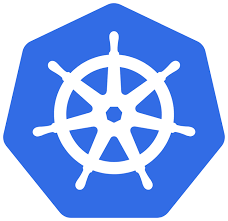Learn how to fix the “Pull Access Denied” error in Kubernetes. Our Google Cloud Support team is here to help you with your questions and concerns.
 How to Fix the “Pull Access Denied” Error in Kubernetes
How to Fix the “Pull Access Denied” Error in Kubernetes
If you have ever deployed containers in Kubernetes, you will likely have encountered the dreaded “pull access denied” error.
According to our Experts, this error means that Kubernetes cannot download the container image from the registry. In other words, it blocks our deployment.
Today, we will examine the error’s causes, its operational and technical consequences, and how to fix it.
An Overview:
-
- What is the “Pull Access Denied” Error?
- Impacts of the Error
- Common Causes & How to Fix Them
- 1. Incorrect Registry Credentials
- 2. Wrong Image Name or Tag
- 3. Network Connectivity Issues
- 4. Insufficient Repository Permissions
- 5. Misconfigured Private Registry
- 6. Registry Rate Limits
- 7. Image Not Found
- How to Prevent “Pull Access Denied” Errors
What is the “Pull Access Denied” Error?
This error happens when Kubernetes fails to pull a container image from a registry due to authentication or authorization issues. It typically looks something like this in the logs:
Failed to pull image: rpc error: code = Unknown desc = Error response from daemon: pull access denied for …
Impacts of the Error
- Pods stay in a Pending or ContainerCreating state.
- Containers never start or initialize.
- The deployment stops.
- Services relying on those containers become unavailable.
- We can’t run critical workloads.
- In severe cases, it can trigger a complete service outage.
- The scheduler can’t place pods.
- Nodes remain underutilized.
- The cluster resources are wasted.
- The kubelet can’t authenticate with the registry.
- The image pull process fails until manual intervention.
- Kubernetes tries again with increasing delays. It eventually gives up after ~5 minutes of failures.
- Multiple failed pulls strain the cluster.
Common Causes & How to Fix Them
1. Incorrect Registry Credentials
We pulled from a private registry but didn’t configure the credentials correctly.
Click here for the Solution.
- First, create a Kubernetes secret with the right credentials:
kubectl create secret docker-registry registry-secret \
--docker-server=registry-url \
--docker-username=user_name \
--docker-password=pass_word \
--docker-email=email
- Reference the secret in the Pod spec:
spec:
imagePullSecrets:
- name: registry-secret
containers:
- name: app-container
image: your-image:tag
For more on Kubernetes authentication-related issues, check out how to fix 403 RPC errors due to permission denied in Kubernetes.
2. Wrong Image Name or Tag
Typos or incorrect tags.
Click here for the Solution.
- Double-check spelling and capitalization.
- Confirm the tag exists using:
docker manifest inspect <image>:<tag>
- Look for clues using:
kubectl describe pod pod-name
kubectl get events
3. Network Connectivity Issues
Network blocks or DNS failures.
Click here for the Solution.
- Test connectivity from cluster nodes:
curl https://<registry-url>/v2/
nslookup <registry-domain>
- Check for network policies or firewalls:
kubectl get networkpolicy
If you see broader issues like unreachable nodes, these could be related to Kubernetes cluster unreachable errors.
4. Insufficient Repository Permissions
The Kubernetes node or service account doesn’t have pull rights.
Click here for the Solution.
- Grant read access in the container registry.
- Use role-based access control (RBAC):
kubectl create role registry-puller \
--verb=get,list \
--resource=secrets,pods
kubectl create rolebinding registry-pull-binding \
--role=registry-puller \
--serviceaccount=default:default
- Periodically rotate credentials.
5. Misconfigured Private Registry
Incorrect registry URL or missing auth setup.
Click here for the Solution.
- Validate the image path:
image: private-registry.company.com/my-app:tag - Then, store secrets securely:
kubectl create secret docker-registry private-reg-cred \
--docker-server=private-registry.company.com \
--docker-username=admin \
--docker-password=secure-password
6. Registry Rate Limits
Exceeded anonymous pull limits (common with Docker Hub).
Click here for the Solution.
- Use authenticated pulls to increase limits.
- Add `imagePullPolicy: IfNotPresent` to reduce unnecessary pulls.
7. Image Not Found
The image was never pushed or got deleted.
Click here for the Solution.
- Check with tools like `skopeo`:
skopeo inspect docker://<image>:<tag>
- Rebuild and push the image:
docker build -t my-app:latest .
docker push my-app:latest
How to Prevent “Pull Access Denied” Errors
- Use strong, rotating credentials.
- Store secrets with Kubernetes.
- Keep image names and versions consistent.
- Automate image validation during CI/CD.
- Set pull policies wisely (`IfNotPresent` for stability).
- Use private registry mirrors for faster, safer pulls.
- Set up logging for image pull events.
- Create alerts for repeated pull failures.
- Use tools like Prometheus and Grafana to stay on top of issues.
Frequent restarts due to pull issues can escalate to back-off restarting failed container errors, so prevention is key.
If you’re working with NFS mounts in your cluster, you may also run into Kerberos-related access denied issues when mounting NFS volumes, which are similarly linked to permissions and authentication.
[Need assistance with a different issue? Our team is available 24/7.]
Conclusion
The “pull access denied” error can stop deployments and take down services. We can fix and prevent this error by understanding the root causes and applying best practices.
In brief, our Support Experts demonstrated how to fix the “Pull Access Denied” error in Kubernetes.







0 Comments